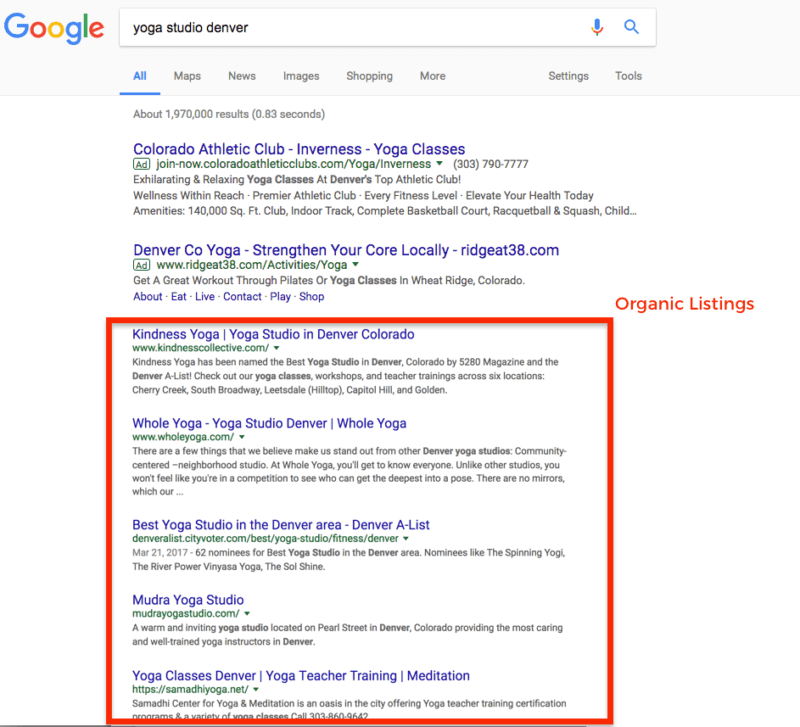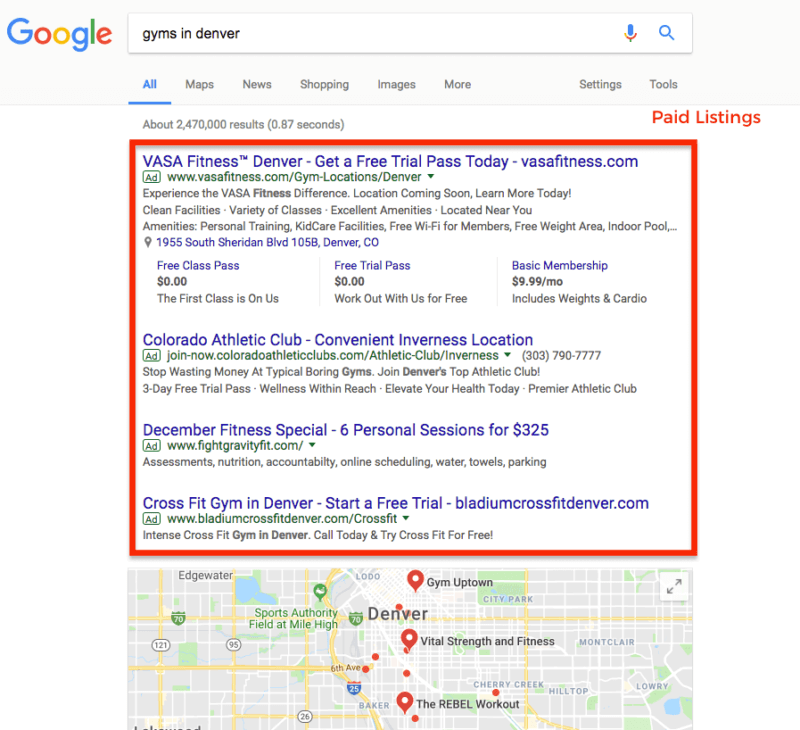Search Engine Marketing: The Key to Getting More Traffic to Your Website


Over and over we hear from our customers that launched a new website, and then… not much happens. They don’t see a great deal of traffic or get a ton of phone calls, and they don’t understand why.
Unfortunately, the “build it and they will come” adage doesn’t work when it comes to fitness business websites. Just having a site isn’t enough to get visits.
For a great ROI on your website, it’s not only important to show up in search results, but to rank at the top. About 60% of people click on one of the top three organic results that appear in an organic search. 75% percent won’t even look at results on the second page.
This is why there’s stiff competition for those valuable top spots in search results. Companies with the greatest success invest in a solid Search Engine Marketing (SEM) program. With SEM, your site becomes more visible to people looking for a business like yours.
What’s Search Engine Marketing?
The aim of an SEM program is to get more web traffic by increasing your website’s visibility in search engine results.
Get your copy of our free Search Engine Marketing Checklist for Fitness Businesses
Your greater SEM program will include multiple initiatives that get more traffic, from social media program to press releases. But two of the most important initiatives for boosting web traffic are Search Engine Optimization (SEO) and Pay-Per-Click (PPC) advertising. We’ll touch on them here, and our next couple blog posts will dive deeper into the things you can do get more from your website.
- Pay-Per-Click (PPC): Getting “paid” traffic by running ads on search engines
- Search Engine Optimization (SEO): Earning “organic” traffic by optimizing your site’s content for a higher ranking on the results page
Why Search Engine Ranking is Crucial to Getting Clicks
In short, just about everybody (93%) has their first online experience with a business by typing words into a search engine. If that user is searching from their phone, about 70% will call then and there.
72% of users who did a local search visited a business within 5 miles of their physical location.
Search Engine Optimization (SEO) for “Organic” Traffic
SEO earns you traffic the old-fashioned way, if you will. People enter search terms relevant to your business, your site comes up in the results because your content best matches the search terms entered.
82% of marketers see SEO as becoming more and more effective; nearly half say its importance to their business is increasing “significantly.”
Search engines favor sites with fresh, relevant content. A good SEO program involves things like:
- Generating keyword lists (terms users search by)
- Optimizing content on your site (making sure those keywords appear naturally with the right frequency and emphasis)
- Refreshing that content regularly (say, through blog posts)
- Optimizing behind-the-scenes content that search engines see, but users may not, like alt tags and metadata

Pay-Per-Click (PPC) Advertising for “Paid” Traffic
With PPC, you create advertisements that appear high on search engine results pages. Every time a user clicks the ad, you pay a fee to the engine.
Marketers report that for every $1 spent on PPC, the business gets $2 in profit on average, which is why the number of businesses who didn’t find online advertising effective is so small (9%).
A good PPC program involves things like:
- Writing a variety of keyword-rich ads
- Creating a campaign through Google AdWords
- Managing your bids and budget
- Creating a customized landing page to send paid traffic to
- Continuously optimizing and improving your campaign

Search Engine Marketing – an Ongoing Investment, but Totally Worth It
As much as we’d like our website and online marketing to be a set-it-and-forget-it type of thing, getting the most from your online presence will take some ongoing maintenance. This can be daunting to some fitness businesses (who wants to manage a PPC campaign when you could be training your members or programming workouts for the week?), but it’s worth doing right.
The more visible you are to your prospects, the more web traffic you’ll see – and ultimately, the more members you’ll acquire.
Need help getting more traffic to your website? Get your free copy of our Search Engine Marketing Checklist for Fitness Businesses.

I’m Coach Kelli, a devoted CrossFit gym owner with 15 years of experience managing my facility, along with owning yoga studios and wellness centers. Beyond the fitness world, I have a passion for cooking, cherish moments with my children and family, and find joy in spending time outside. Having experienced the highs and lows, I’m dedicated to leveraging my expertise to help you grow and succeed on your fitness journey.

I’m Coach Kelli, a devoted CrossFit gym owner with 15 years of experience managing my facility, along with owning yoga studios and wellness centers. Beyond the fitness world, I have a passion for cooking, cherish moments with my children and family, and find joy in spending time outside. Having experienced the highs and lows, I’m dedicated to leveraging my expertise to help you grow and succeed on your fitness journey.








